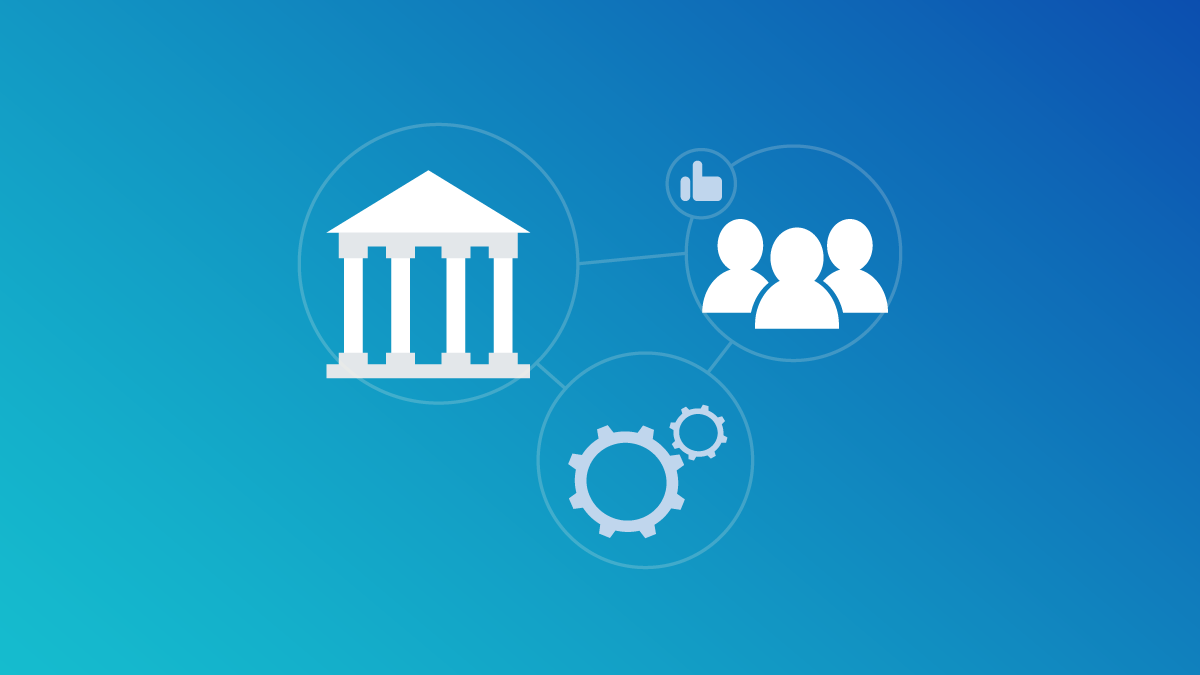
Banks are finding exciting new ways to turn their data into valuable insights. To succeed in this new data-driven world, banks of all sizes are turning to the cloud. Cloud-based solutions provide the optimal storage and tools needed to manage vast data requirements while making data and insights easily accessible for analytics and the business.
Enterprise data and the insights extracted from that data are the fuel for business transformation, and banks are increasingly looking for a platform with robust analytics capabilities, self-service tools, centralized data governance and the ability to meet regulatory requirements.
Banks are in an era where they must modernize or risk failure. Legacy environments have high support costs, siloed IT environments and face challenges in finding skilled resources to support them.
Often, disparate technology stacks prevent the enterprise from being truly connected through data and insights, underscoring the need for an enterprise-wide, integrated solution. To address these challenges, Anteelo and Google are focusing on ways to create an optimal data-centric ecosystem, combining Google Cloud’s native tools with managed services ; thus, simplifying the management of cloud resources and optimizing analytics programs.
Power of the cloud

Much of the power of the cloud comes from creating a single platform that combines management, monitoring and automation features with security and compliance capabilities at the core of banking operations. This foundation, along with access to analytics products that underpin some of the world’s most widely used services, gives banks the ability to extract valuable business insights from large data sets.
Actionable insights that can be gained as enterprise data, such as transaction information and customer behavior trends, is processed using Google Cloud’s automation capabilities — driving operational efficiency, new revenues and the ability to compete more effectively.
Google analytics tools such as Dataflow, BigQuery, Bigtable and Looker enable organizations to advise, implement and operationalize artificial intelligence (AI) to yield competitive business intelligence. Much of this can be automated and integrated into actively managed business processes that ultimately produce tangible, repeatable business outcomes.
Why move to the cloud?

Analytics from a cloud-based platform can deliver benefits on many different levels. For a chief marketing officer, for example, real-time information on marketing campaign ROI is a valuable metric that is not as readily available or actionable with today’s on-premises systems. Or a chief information security officer could get access to data that improves a bank’s governance capabilities, which delivers benefits in areas such as security and compliance.
Banks are also using open APIs enabled by Google Cloud to authenticate and secure financial communications to customers, enabling a transition from face-to-face transactions to digital channels.
Banks also can use a wide range of cloud-native services for data warehousing and data management. Plus, a wealth of AI and machine learning tools that are integrated effectively can help automate tasks and improve personalized experiences. For example, cloud computing’s elastic capabilities have been shown to cut the training time of data models by more than 50 percent over traditional on-premises systems. Data models converge faster, enabling more rapid delivery of services to markets and enhanced services to consumers.
Another key benefit of moving to the cloud and engaging managed services is that applications can be managed consistently across different environments. Operating in a more efficient development environment means banks can rapidly introduce new products and services to the market and update them more easily.
Banks also have access to high-performance computing (HPC) resources for large processing needs. The use of cloud computing provides banks with modern alternatives for HPC that are manifested in containers and special hardware devices that are purpose-built such as graphical processor units and tensor processing units.
Traditional and legacy on-premises data architectures simply cannot support the variety of data or real-time data streams necessary for advanced enterprise analytics and AI. A modern data architecture is needed. Plus, a cloud environment enables banks to dynamically scale infrastructure up or down to meet demand, which is essential for digital success.
Trust, transform and thrive

Progressing data into actionable insights can be visualized as a process following these three keywords: trust, transform and thrive (see figure). Underpinning that process is a cloud platform tuned to improve visibility, security, scalability, speed and agility.
Analytics: Progressing data to actionable insights
In this model, data from many different sources, including unstructured and siloed data, is collected and ingested. The built-in security features of Google Cloud Platform keep data secure and help build trust in the enterprise. In a Google Cloud Platform deployment managed by Anteelo, for example, security and regulatory compliance are given the highest priority. Google Cloud Platform’s capabilities in areas such as network monitoring and identity access management help banks maintain a high level of data security and compliance.
A trusted partner

Choosing the right partner is crucial when moving to a modern cloud banking platform. It is preferable to have a trusted advisor with extensive experience and IT expertise in banking, capital markets and financial services. Anteelo has been providing banking services at an enterprise level for more than 40 years. Through our unmatched industry expertise we offer a robust set of data services using simplified tools and automation for rapid data acquisition and insights. We help banks identify patterns that can be used to drive business insights in a way that fits their needs. The key is to then prepackage these patterns so organizations can reuse them.
The potential is endless for a cloud platform and the analytics capabilities it delivers to help banks build trust, transform and thrive. A managed cloud platform, purpose-built for banking, provides a consistent surface for accessing the most accurate, up-to-date version of your enterprise’s data. And the technology now exists for analytics to be integrated into daily workflows so banks can extract maximum value from that data.







